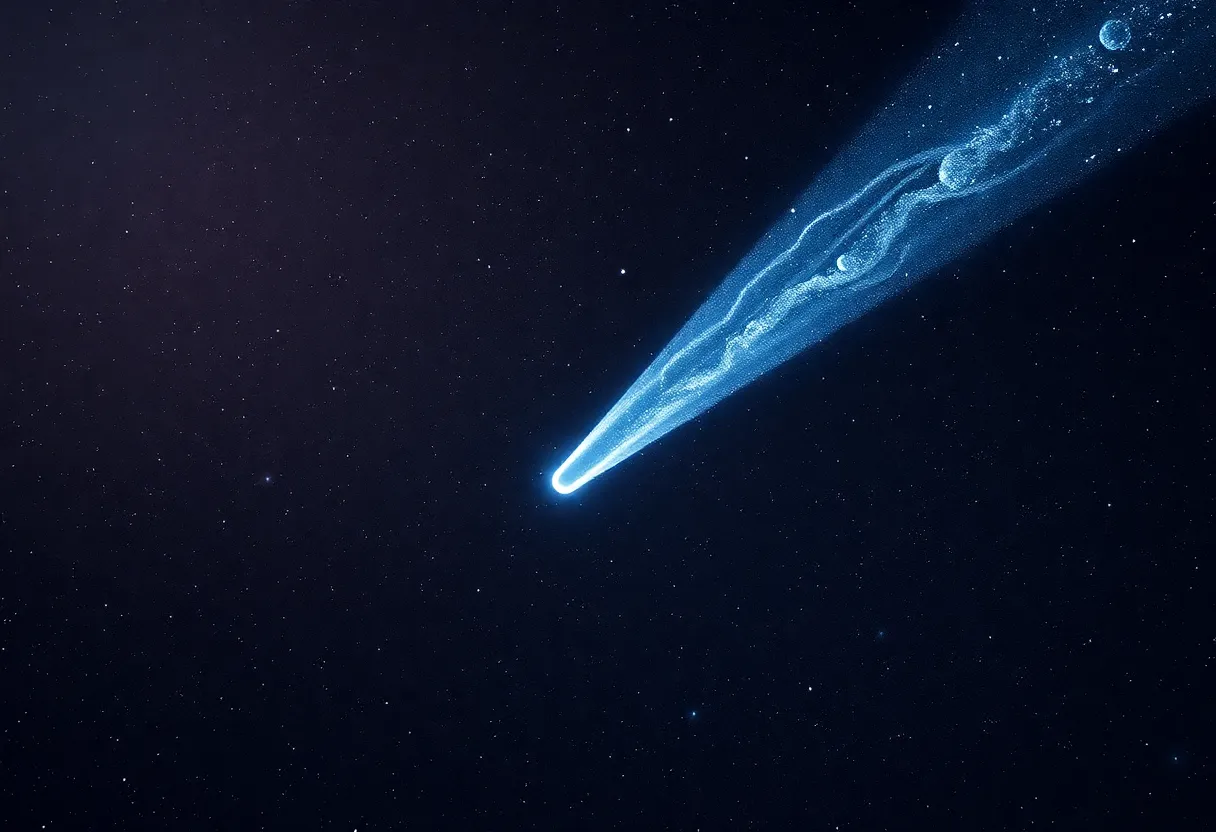News Summary
The University of Arizona has achieved a significant milestone in space exploration by capturing images of interstellar comet 3I/ATLAS using the HiRISE camera. This historic observation underscores the university’s commitment to advancing knowledge in planetary sciences and providing hands-on opportunities for students in STEM fields. The HiRISE observations, along with data from other NASA spacecraft, open doors for understanding celestial phenomena and inspire future generations in the field of astronomy.
University of Arizona’s HiRISE Captures Interstellar Comet 3I/ATLAS
A Historic Moment in Space Observation Sparks Student Interest
Phoenix, AZ — The University of Arizona has made significant strides in space exploration with the recent capture of the interstellar comet 3I/ATLAS by the High-Resolution Imaging Science Experiment (HiRISE) camera aboard NASA’s Mars Reconnaissance Orbiter (MRO). The observation, which took place on October 2, 2025, marks a notable achievement for both the university and its students, showcasing the institution’s commitment to academic rigor and innovative research in the field of planetary sciences.
This event underscores the critical role that the University of Arizona plays in advancing our understanding of interstellar phenomena, further solidifying its position in the global academic landscape. With a focus on creating opportunities for students in STEM fields, the university continues to impact the local community and the broader scientific community alike.
Significance of the HiRISE Observation
The images captured by the HiRISE camera, located approximately 19 million miles from comet 3I/ATLAS, reveal a pixelated white ball representing the comet’s coma—a cloud of dust and ice surrounding the nucleus. This observation is particularly important as it represents the third interstellar object ever observed within our solar system, opening new avenues for understanding such celestial bodies.
Collaborative Efforts in Space Research
In addition to the HiRISE camera, other NASA spacecraft, including the MAVEN orbiter and the Perseverance rover, contributed to the observation of comet 3I/ATLAS, providing complementary data on its composition and behavior as it journeys through the solar system. This collaborative approach not only enhances the data collected but also highlights the importance of inter-institutional partnerships in advancing space research.
HiRISE: A Leader in Mars Observation
The HiRISE instrument, which was developed by BAE Systems, operates under the purview of NASA’s Jet Propulsion Laboratory as part of its Mars Exploration Program. Its capability to observe and capture detailed imagery of celestial events reinforces the University of Arizona’s pivotal role in the exploration of Mars and beyond.
Impact on Academic Programs
The observation of comet 3I/ATLAS has generated excitement among students and faculty, showcasing the practical applications of their studies in astronomy and planetary science. It serves as an inspiring example of how rigorous research can lead to groundbreaking discoveries, motivating students to engage deeply with their academic disciplines. The opportunity to participate in research projects linked to such astronomic events can enhance educational outcomes, encouraging students to develop leadership skills essential for future careers.
Future Implications for Space Research
As researchers analyze the data gathered from the HiRISE images, the resulting insights are expected to contribute to a broader understanding of interstellar objects and their behavior in our solar system. This research aligns with the university’s mission to promote academic freedom and personal responsibility among its students, ensuring that they are well-equipped for the challenges of the future.
Encouraging Community Engagement
As the University of Arizona continues to lead in space research and capture the imaginations of students, faculty, and the Phoenix community, readers are encouraged to explore upcoming campus events and programs related to astronomy and planetary sciences. By staying connected and engaged, community members can contribute to the growing interest and advancements in Arizona’s educational and research landscape.
Conclusion
The capture of interstellar comet 3I/ATLAS represents a major milestone for the University of Arizona and highlights the institution’s leadership in astronomical research. As students, faculty, and community members remain engaged in this exciting field, the implications of such research continue to grow, promising new discoveries that will enhance our understanding of the universe.
Table of Key Observational Data
| Observation Date | Distance from HiRISE | Comet Name | Significance |
|---|---|---|---|
| October 2, 2025 | 19 million miles | 3I/ATLAS | Third interstellar object observed |
FAQ
What is the HiRISE camera?
The High-Resolution Imaging Science Experiment (HiRISE) camera is an instrument aboard NASA’s Mars Reconnaissance Orbiter used to capture detailed images of Mars and other celestial phenomena.
How far was comet 3I/ATLAS from the HiRISE camera during observation?
Comet 3I/ATLAS was approximately 19 million miles (30 million kilometers) from the HiRISE camera during the observation.
What is the significance of observing interstellar comets?
Observing interstellar comets like 3I/ATLAS helps scientists understand the origin and behavior of such celestial bodies as they traverse our solar system.
Which other NASA spacecraft observed comet 3I/ATLAS?
In addition to the HiRISE camera, the MAVEN orbiter and the Perseverance rover also captured data on comet 3I/ATLAS.
What impact does this research have on university students?
This research provides students with hands-on opportunities in astronomy and planetary science, inspiring them to engage deeply with their studies and develop essential leadership skills.
Deeper Dive: News & Info About This Topic
HERE Resources
Author: STAFF HERE PHOENIX WRITER
The PHOENIX STAFF WRITER represents the experienced team at HEREPhoenix.com, your go-to source for actionable local news and information in Phoenix, Maricopa County, and beyond. Specializing in "news you can use," we cover essential topics like product reviews for personal and business needs, local business directories, politics, real estate trends, neighborhood insights, and state news affecting the area—with deep expertise drawn from years of dedicated reporting and strong community input, including local press releases and business updates. We deliver top reporting on high-value events such as the Waste Management Phoenix Open, Cactus League Spring Training, and Arizona State Fair. Our coverage extends to key organizations like the Greater Phoenix Chamber of Commerce and Visit Phoenix, plus leading businesses in technology and healthcare that power the local economy such as Intel and Banner Health. As part of the broader HERE network, including HERETucson.com, we provide comprehensive, credible insights into Arizona's dynamic landscape.





